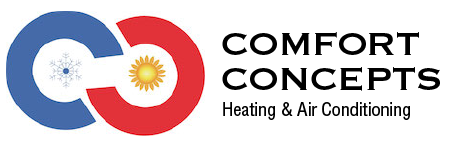
A furnace is often a background player in your home, keeping you warm in the cold winter months. It often doesn’t get noticed until something goes wrong.
One source might be that your furnace has a cracked heat exchanger. It can potentially be hazardous, so it’s worthwhile to learn the evidence of a cracked heat exchanger and what you should do if you suspect that may be the problem.
What Is a Heat Exchanger in a Furnace?
A heat exchanger helps move heat from the combustion chamber inside your furnace to the air that circulates through the system. It usually handles this via coils or tubes that heat up the air while functioning as a barrier to keep the gasses produced in the combustion chamber, called flue gasses, from getting out into your home.
Is a Cracked Heat Exchanger Dangerous?
Thanks to its key role, it shouldn't come as a surprise that a damaged heat exchanger can be very dangerous. Cracks in the heat exchanger can allow dangerous gasses – such as carbon monoxide, which can be lethal – to circulate through your home.
For this reason, don't ever turn on your furnace if you suspect it has a cracked heat exchanger, as this could make your entire family ill. Call an HVAC professional as soon as possible if you are worried your furnace has a cracked heat exchanger that needs repair.
Four Warning Signs of a Cracked Heat Exchanger:
- Furnace turns off: Cracks in the heat exchanger can cause your furnace to switch off.
- Odd Smells: If the air coming out of your furnace has an intense chemical odor, it might be a sign gas is seeping through cracks in your heat exchanger. These gasses, which may smell like formaldehyde, are a significant warning sign.
- Carbon monoxide alarm goes off or you notice poisoning symptoms: If a cracked heat exchanger is releasing carbon monoxide in your home, your carbon monoxide alarm may go off or household members may start experiencing signs of carbon monoxide poisoning. Symptoms include headaches, dizziness, weakness, nausea, vomiting or feeling drowsy. If the alarm goes off or you feel unusually tired, exit the home immediately and then call for help.
- Soot: If you find black sooty buildup around the exterior of your furnace, it’s more evidence something might be seriously wrong.
What You Can Do if a Furnace Heat Exchanger is Cracked
If you believe your furnace has a cracked heat exchanger, call a pro experienced in furnace installation Yukon right away so they can inspect your system and, if required, start a furnace heat exchanger replacement. Costs should fluctuate depending on the situation, but estimates can roughly suggest $1,000 to $3,000.
Fortunately, the good news is that heat exchangers are generally included in the warranty. You should check the warranty paperwork on your furnace, because while the warranty might not cover the entire cost of repairs, it could significantly lower your bill.
How to Prevent a Cracked Heat Exchanger in Your Home
One of the best ways to avoid problems in your furnace overall is via routine furnace maintenance. Furnaces offer the most benefits when they work efficiently. Hiring a certified professional to check your furnace for old parts, clogs in the air filters and other likely problems can keep you from getting a big bill later on.
It’s also a good idea to inspect your furnace filters every few months – it’s recommended some filters be swapped out every 90 days or sooner if they are dirty or grimy. While the filters are not part of the heat exchanger itself, the strain of pulling air through a clogged filter makes your entire furnace work more vigorously to complete its job. And the harder your furnace works, the more deterioration parts like the heat exchanger will experience.

